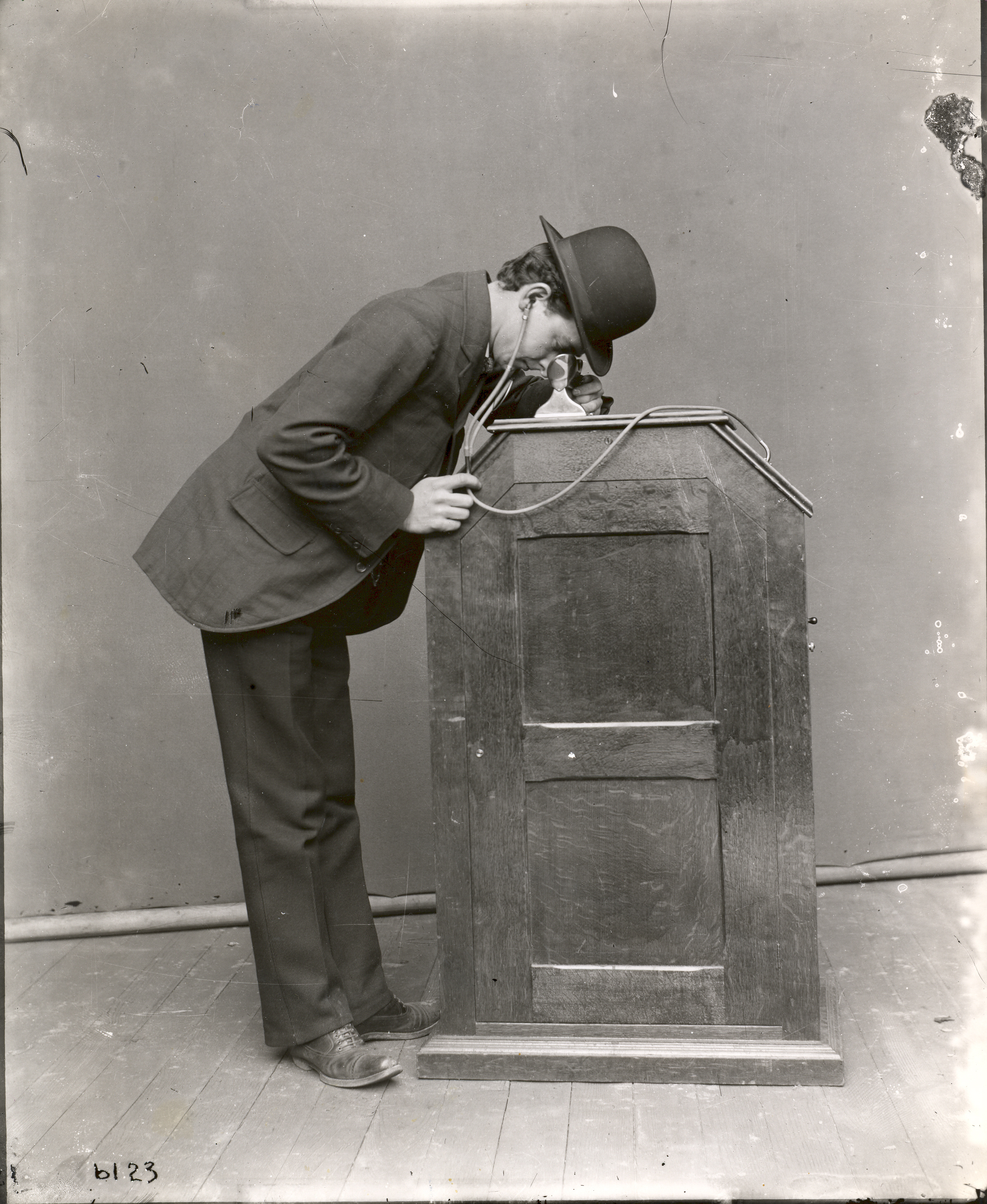
A non-projection version of the Kinetophone that presaged the theater type. It was referred to as a “peep show.”
One persistent problem for Thomas Edison was the development of the talking picture. He thought he had the answer in 1913, when he exhibited a projection version of his Kinetophone in New York City to much acclaim. But it was still just another phonograph record-based model that had to be synced to the images by an operator, Unfortunately, these employees generally had butterfingers, and the new sensation soon lost its lustre. Before the close of the following year, all the Kinetophone images and sound masters were destroyed in a warehouse fire. True talkies would have to wait. A New York Times article about the initial exhibition, which touched on the technical issues to come:
After Thomas A. Edison had invented the motion picture and the talking machine he dreamed of talking pictures, and the next morning he went to work again. For several years hints came from the Edison laboratory that the Kinetophone was in the process of development. Finally Edison spoke of his invention as a thing accomplished and yesterday, for the first time on any stage, the “Kinetophone” was on the bill at four of the Keith Theatres, the Colonial, the Alhambra, the Union Square, and the Fifth Avenue. To judge from the little gasps of astonishment and the chorus of “Ain’t that something wonderful?” that could be heard on all sides the Kinetophone is a success.
The problem involved was fairly simple. Mr. Edison was looking for perfect synchronization of record and film. The difficulty was to have a record sufficiently sensitive to receive the sounds from the lips of actors who would still be free to move about in front of the camera instead of being obliged to roar into the horn of a phonograph. But the difficulties have been overcome and the kinetoscope is actually in vaudeville and highly regarded there.
The first number of the exhibit was a descriptive lecture. The screen showed a man in one of those terribly stuffy, early eighties rooms that motion-picture folk seem to affect. He talked enthusiastically about the invention, and as his lips moved the words sounded from the big machine behind the screen. Gesture and speech made the thing startlingly real. He broke a plate, blew a whistle, dropped a weight. The sounds were perfect. Then he brought on a pianist, violinist, and soprano, and “The Last Rose of Summer” was never listened to with more fascinated attention. Finally the scope of kinetophone powers was further illustrated by a bugler’s apoplectic efforts, and the barking of some perfect collies.
The second number was a minstrel show with orchestra, soloists, end men, and interlocutor, large as life and quite as noisy. It brought down the respective houses but the real sensation of the day was scored quite unintentionally by the operator of the machine at the Union Square Theatre last evening. He inadvertently set the picture some ten or twelve seconds ahead of his sounds, and the result was amazing. The interlocutor, who, by a coincidence, wore a peculiarly defiant and offended expression, would rise pompously, his lips would move, he would bow and sit down. Then his speech would float out over the audience. It would be an announcement of the next song, and before it was all spoken the singer would be on his feet with his mouth expanded in fervent but soundless song.
This diverted the audience vastly, but the outbursts of laughter would come when the singer would close his lips, smile in a contented manner, bow, notes were still ringing clear. The audience, however, knew what happened, and the mishap did not serve to lessen their tribute of real wonder at Edison’s intent.•
Tags: Thomas Edison


